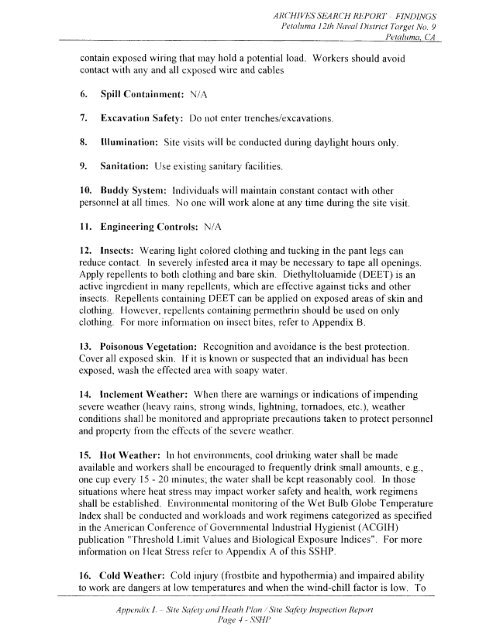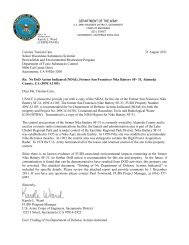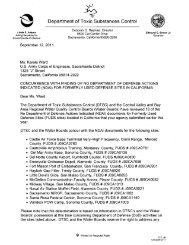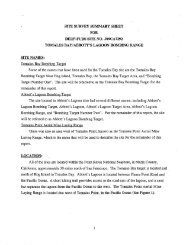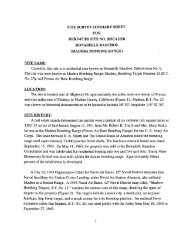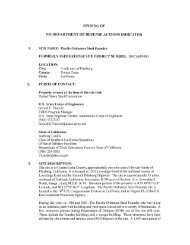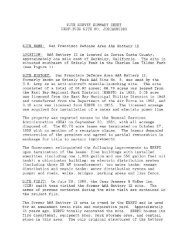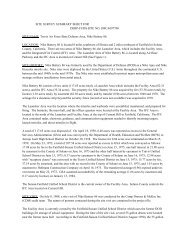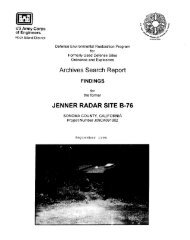Petaluma Bombing Target Archive Search Report ... - Corpsfuds.org
Petaluma Bombing Target Archive Search Report ... - Corpsfuds.org
Petaluma Bombing Target Archive Search Report ... - Corpsfuds.org
You also want an ePaper? Increase the reach of your titles
YUMPU automatically turns print PDFs into web optimized ePapers that Google loves.
contain exposed wiring that may hold a potential load. Workers should avoid<br />
contact with any and all exposed wire and cables<br />
6. Spill Containment: N/A<br />
7. Excavation Safety: Do not enter tsenches/excavations<br />
8. Illumination: Site visits will be conducted during daylight hours only.<br />
9. Sanitation: Use existing sanitary facilities.<br />
10. Buddy System: Individuals will maintain constant contact with other<br />
personnel at all times. No one will work alone at any time during the site visit.<br />
11. Engineering Controls: N/A<br />
12. Insects: Wearing light colored clothing and tucking in the pant legs can<br />
reduce contact. In severely infested area it may be necessary to tape all openings.<br />
Apply repellents to both clothing and bare skin. Diethyltoluanlide (DEET) is an<br />
active ingredient in many repellents, which are effective against ticks and other<br />
insects. Repellents containing DEET can be applied on exposed areas of skin and<br />
clothing. However, repellents containing pennethrin should be used on only<br />
clothing. For more information on insect bites, refer to Appendix B.<br />
63. Poisonous Vegetation: Recognition and avoidance is the best protection.<br />
Cover all exposed skin. If it is known or suspected that an individual has been<br />
exposed, wash the effected area with soapy water.<br />
14. Inclement Weather: When there are wanlings or indicai.ions of impending<br />
severe weather (heavy rains, shong winds, lightning, tornadoes, etc.), weather<br />
conditions shall be monitored and appropriate precautions taken to protect personnel<br />
and property from the effects of the severe weather.<br />
15. Hot Weather: In hot environments, cool drinking water shall be made<br />
available and workers shall be encouraged to frequently drink small amounts, e.g.,<br />
one cup every 15 - 20 minutes; the water shall be kept reasonably cool. In those<br />
situations where heat stress may impact worker safety and health, work regimens<br />
shall be established. Environnmental monitoring of the Wet Bulb Globe Temperature<br />
Index shall be conducted and workloads and work regimens categorized as specified<br />
in the American Conference of Governmental Industrial Hygienist (ACGIH)<br />
publication "'Thseshold Limit Values and Biological Exposure Indices". For more<br />
information on Heat Stress refer to Appendix A of this SSHP.<br />
16. Cold Weather: Cold in-jury (frostbite and hypother-mia) and impaired ability<br />
to work are dangers at low temperatures and when the wind-chill factor is low. To


